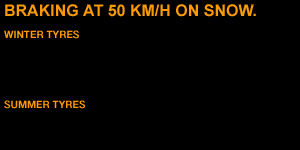With costs of living increasing year on year the thought of saving money on your car becomes more and more enticing, with the main area of savings being on the cars tyres.
Increasing numbers of vehicles on the roads has increased the opportunity and availability of buying part worn tyres. A recent study by the NTDA (The National Tyres Distributors Association) found that 'there are currently 4.5 million part-worn tyres being sold in the UK every year', which is an astonishingly large figure given the fact that some can be dangerous and the price of new tyres have decreased over the past few years.
Buying part-worn tyres can be hugely risky, as the NTDA found out when they conducted a survey of part-worn tyres. This survey was conducted by a mystery shopper, with 817 part-worn tyres being bought across the UK.
What the survey found was alarming:
- Of the 817 tyres bought 34% contained faults or damage which meant they shouldn't of been offered for sale.
- With 97% not being marked as part-worn tyres, as required by law.
The figures shown, show exactly what the industry is having to deal with, in terms of illegal tyres. These figures are made worse by the fact that 986 motorists in the UK were injured or killed in accidents caused by, illegal, defective or under inflated tyres.
Damage found on a part-worn tyre
With statistics like this it's no wonder that the NTDA are starting a campaign to worn drivers of the risks of buying part worn tyres.
Whilst the study found many part-worn tyres will damage that would make them illegal, there we some cases that are beyond believable that were found.
Case 1:
After a recent incident, that had been caused by steering problems, a NTDA member inspected what the driver thought to be good part-worn tyres. What they found was very different.
The two rear tyres were found to be winter part-worn tyres, (the customer has been sold summer tyres).
If you though that was bad enough on the front, one of the front tyres was over 16 years old. With the other one not even being the correct size for the vehicle, meaning it had been stretched across the rim.
Case 2:
One customer was sold a pair of part-worn tyres as 'new' tyres. However on inspection one of the tyres was found to be 19 years old and the other was on a completely different level of being dangerous, with a number of illegal repairs being undertake, including the use of duct tape to cover a puncture.
As you can see from these astonishing cases, buying part-worn tyres is a huge risk.
Buying new tyres vs part-worn tyres:
Part-Worn Tyres - £20
New Tyres - £40
Knowing you're safe on the road and your tyres aren't illegal - PRICELESS
So the next time you need some new tyres and see part-worn tyres for sale at a really cheap price, have a think about what might be.








